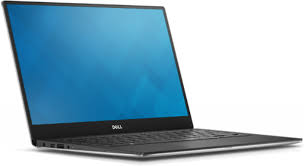
It’s one of the in-flight technology rules that has persisted, even as others have fallen away.
Federal regulators in the United States in 2013 stopped requiring us to power down our phones for takeoff. Europe is moving toward allowing in-flight 5G phone calls. Yet before every takeoff and landing, flight attendants make the familiar announcement: Turn off and stow your laptops and other large electronics.
Like cellphone regulations, the rule on stowing laptops originated in fears of radio interference, but those have largely been alleviated by advances in technology and radio frequency shielding, said John Nance, a veteran pilot and safety consultant.
Today, it’s more about physical safety – the possibility of your laptop getting in the way of an emergency evacuation or “clunking around hitting people in the head” during severe turbulence, Nance said.
“The basic idea is get all the clutter out of the way and don’t have a laptop on your lap, because you’re going to have to do something with it as you try to scramble out of the airplane in 90 seconds,” he said, adding that charging cords should also be unplugged during takeoff and landing to avoid a tripping hazard.
Large personal electronic devices must be stowed during takeoff and landing “so as not to present a hazard in the event of severe turbulence, crash forces, or emergency egress,” the Federal Aviation Administration explained in a 2013 policy.
The agency added on its website that the rule is in place for the same reason that tray tables must be stowed and seats must be placed upright – “if there’s an emergency, larger and heavier items such as standard laptops could impede evacuation of the airplane.”
The agency’s rule focuses on takeoffs and landings because those parts of a flight carry by far the largest risk of something going wrong. Within the bounds of those FAA rules, airlines are allowed to set the specifics of their large electronics policy.
United, for example, permits the use of personal computers only above 10,000 feet and when announced by the flight crew. Even “small notebook laptops” may not be used until the flight crew permits it. United also bars devices with lithium ion batteries exceeding 100 watt hours and lithium metal batteries over 2 grams.
Nance said lithium ion batteries, which are in most consumer devices and can catch fire if damaged or improperly manufactured, pose a major concern in aviation. Airlines generally require all devices with lithium ion batteries to be carried onboard, rather than checked, so that any fire could be caught early, he said.
“If they break into flames in a bag in the baggage compartment, we got a horse of a different color with nobody down there to see it, feel it and stomp it,” he said.
With the requirement to stow your computer during takeoff and landing, you might be tempted to slip it into the seat-back pocket in front of you, but that could pose similar hazards in an evacuation, Nance said.
According to the FAA – which issued guidance on seat-back pocket use in 2009 after a New York Times travel columnist was barred from putting his reading glasses in one – the pockets are designed to hold a maximum of 3 lbs. of weight without breaking or getting in the way of an evacuation. The 3-lbs limit includes items placed there by the airline, such as a safety card and magazine, meaning a laptop would likely exceed the maximum weight.
“If a seat pocket fails to restrain its contents, the contents of the seat pocket may impede emergency evacuation or may strike and injure a passenger,” the FAA wrote in its guidance.
“If small, lightweight items, such as eyeglasses or a cell phone, can be placed in the seat pocket without exceeding the total designed weight limitation of the seat pocket or so that the seat pocket does not block anyone from evacuating the row of seats, it may be safe to do so,” the agency added.
As with electronics use, airlines are permitted to set their own specific policies on seat-back pockets, so your airline might have a stricter policy. Some airlines are even switching to hard plastic or mesh pockets to prevent passengers from storing large devices there, Nance said.
The FAA explicitly noted its seat-back pocket restrictions do not apply midflight, so feel free to place your laptop there when you decide to take a nap or use the bathroom – provided you remove it before landing.
“Nothing in the carry-on baggage regulation prohibits a passenger from taking out small personal items from an approved stowage location and placing them in the seat pocket after takeoff and stowing them in approved locations before landing,” the FAA wrote.
Still, you may want to think twice about using that seat-back pocket at all – a 2014 study found that the MRSA bacteria survived for a week on the cloth of an uncleaned seat-back pocket.
(c) 2022, The Washington Post











